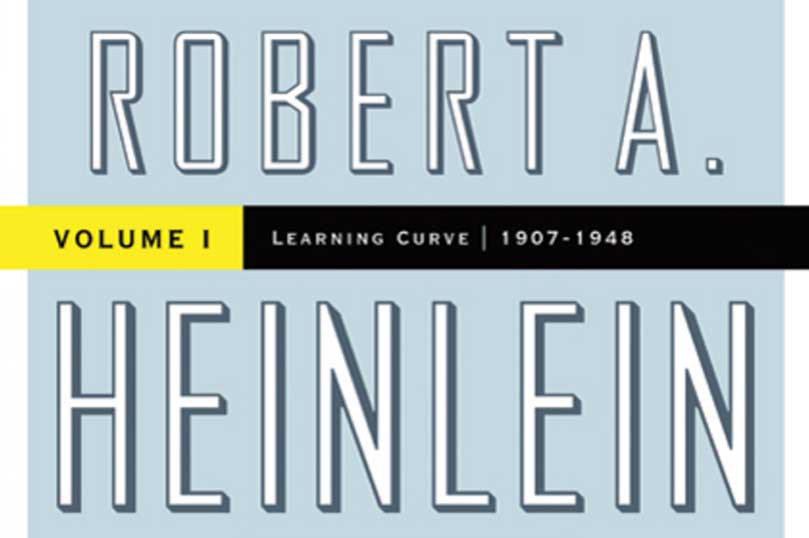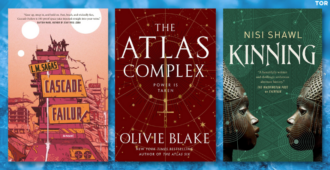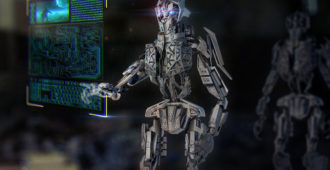Welcome to Throwback Thursdays on the Tor/Forge blog! Every other week, we’re delving into our newsletter archives and sharing some of our favorite posts.
In 2010, we published the first of a two volume biography of one of the giants of science fiction: Robert A. Heinlein. At that time, we had an idea: why not ask our authors about their favorite Heinlein novels? Tor editor Stacy Hill was our shepherd for this series, and updates us on our journey. Now that Robert A. Heinlein: In Dialogue with His Century, Volume 2 has come out, we’re revisiting that series. We hope you enjoy this blast from the past, and be sure to check back in every other week for more!
From Tor editor Stacy Hill: Regular readers of Tor’s newsletter and our blog know that Tor has recently published an all-new biography of Robert A. Heinlein. Written with the blessing of Heinlein’s late widow, Virginia, the work was many years in the making and contains a wealth of interesting information, including never-before-published excerpts from Heinlein’s correspondence. Even if you thought you knew everything there was to know about the man, I can promise you there are surprises to be found within these pages.
So, in celebration of the man and his works, we asked a number of sf writers to tell us which Heinlein novel is their favorite, and why. We were lucky enough to get a host of great authors, including:
David Brin
David Drake
David G. Hartwell
L.E. Modesitt, Jr.
Rudy Rucker
Joan Slonczewski
Charles Stross
Michael Swanwick
Vernor Vinge
What’s Your Favorite Robert A. Heinlein Novel, Joan Slonczewski?
Have Space Suit—Will Travel was one of the more important books I read as a child. It starts with a bright teenager obsessed with getting to the moon, like I was. To get there, the teen has to win a space suit and get kidnapped by aliens, and escape with the help of two females—a child genius and an advanced alien—both clearly brighter than he is. Back then, bright females were scarce in any fiction.
In Have Space Suit, Heinlein’s ability to hook the reader draws us through a remarkable introduction in which an entire space suit is described at length. We keep turning pages through the teen’s course selection for senior year, as he takes up Spanish, Latin, calculus, and biochemistry—all of which later help him escape the aliens and worse. The book feels deceptively simple; its opening line consists of seven words of one syllable. Yet Heinlein weaves in concepts of mindboggling depth, from gas exchange in a space suit to linguistic development in the Roman Empire. Through it all, the humor is fresh and obvious to any reader. The Roman soldier even cracks a queer joke—imagine getting that past the juvenile censors in 1958.
From the protagonist’s teenage viewpoint, Earth-bound adults appear distant and preoccupied. The only ones who seem to be having fun are scientists. That, too, seemed familiar to me as the child of a physicist who worked on a Hal-like IBM 360. In the sixties, science was the stagecoach, the mule train heading toward the future’s ever-receding frontier. Have Space Suit was the kind of book that did that, a fictional journey driven by science.
Heinlein’s aliens are completely fantastic, yet somehow as real as a neighbor next door. Even the most advanced creatures are fallible, making mistakes that might doom an entire race. Yet the story begins and ends in small-town Ohio, near the home of the Wright brothers, and near where we raised our two sons. Today, this area still feels about the same. Any day now I expect to see those two alien space ships racing in.
This article is originally from the October 2010 Tor/Forge newsletter. Sign up for the Tor/Forge newsletter now, and get similar content in your inbox every month!







